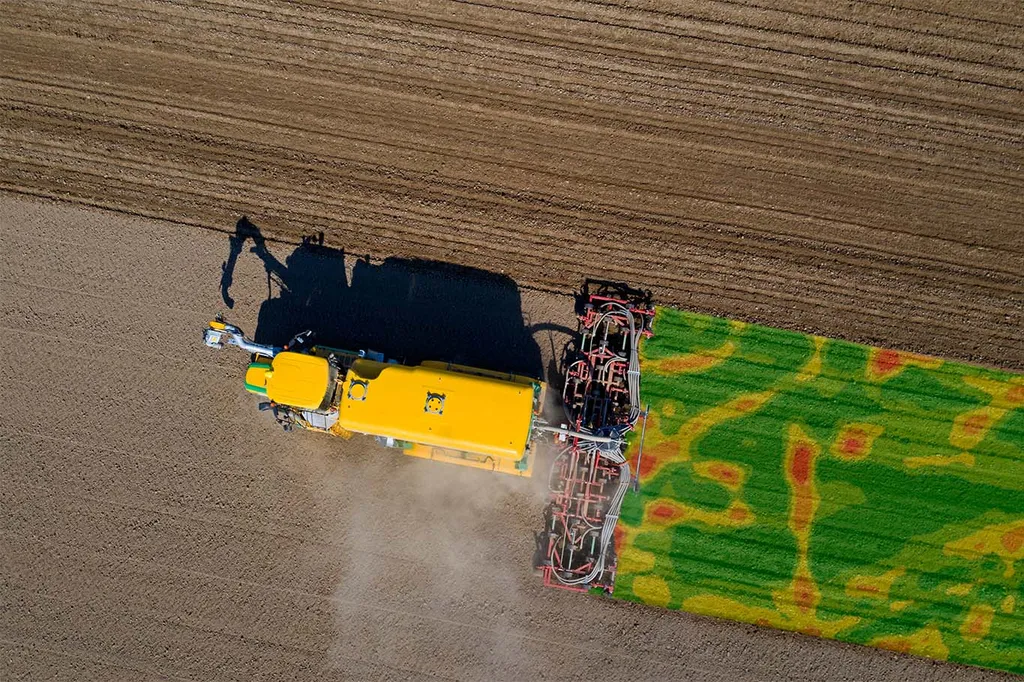In the quest for precision agriculture, researchers are continually seeking innovative methods to enhance nutrient management, particularly in the characterization of liquid manure. A recent study published in *Sensors* explores the potential of near-infrared spectroscopy (NIRS) as a cost-effective and portable alternative to the more established nuclear magnetic resonance (NMR) spectroscopy for analyzing liquid manure properties. The research, led by Mehdi Eslamifar at the Institute of Agricultural Engineering at Kiel University, offers promising insights into the future of on-site manure analysis.
Accurate characterization of liquid manure properties such as dry matter (DM), total nitrogen (TN), ammonium nitrogen (NH₄-N), and total phosphorus (TP) is crucial for effective nutrient management. Traditional methods like NMR spectroscopy provide high accuracy but are often costly and less portable, making them less practical for on-site analysis. The study investigates whether NIRS, combined with advanced pre-processing and machine learning techniques, can offer a viable alternative.
The research involved analyzing 51 liquid manure samples using both NIRS and NMR spectroscopy. The NIR data underwent spectral pre-processing, including two- and three-band index transformations and feature selection, to enhance predictive accuracy. Partial least squares regression (PLSR) and LASSO regression were employed to develop calibration models.
The results were promising. NIRS showed fair predictive accuracy for dry matter (DM) with an R² of 0.78 and an RPD of 2.15, compared to factory-calibrated NMR, which had an R² of 0.68 and an RPD of 0.81. However, NMR outperformed NIRS in predicting chemical properties. For total nitrogen (TN), ammonium nitrogen (NH₄-N), and total phosphorus (TP), NMR achieved R² values of 0.89, 0.97, and 0.95, respectively, with corresponding RPD values of 1.74, 5.70, and 2.64. In contrast, NIRS achieved R² values of 0.66, 0.84, and 0.84, with RPD values of 1.68, 2.45, and 2.51, respectively.
One of the key findings was that two- and three-band indices significantly enhanced NIRS performance compared to raw data. This enhancement resulted in R² increases of 34%, 57%, 25%, and 33% for DM, TN, NH₄-N, and TP, respectively. Feature selection also played a crucial role in reducing spectral dimensionality without compromising prediction accuracy.
“This study highlights the potential of NIRS as a portable tool for on-site manure characterization,” said Eslamifar. “While NMR provides superior laboratory validation, NIRS offers a more practical and cost-effective solution for field applications.”
The commercial implications of this research are substantial. For farmers and agricultural businesses, the ability to conduct on-site analysis of liquid manure properties can lead to more efficient nutrient management, reduced costs, and improved environmental sustainability. The portability and lower cost of NIRS make it an attractive option for routine monitoring and decision-making in the field.
As the agricultural sector continues to embrace precision farming techniques, the integration of advanced technologies like NIRS and NMR spectroscopy will play a pivotal role. The complementary use of these methods can provide a comprehensive approach to nutrient management, ensuring optimal use of resources and minimizing environmental impact.
The research, published in *Sensors* and led by Mehdi Eslamifar at the Institute of Agricultural Engineering at Kiel University, underscores the importance of continuous innovation in agricultural technology. By leveraging the strengths of both NIRS and NMR, the agricultural sector can move towards more efficient and sustainable practices, ultimately benefiting both producers and the environment.

